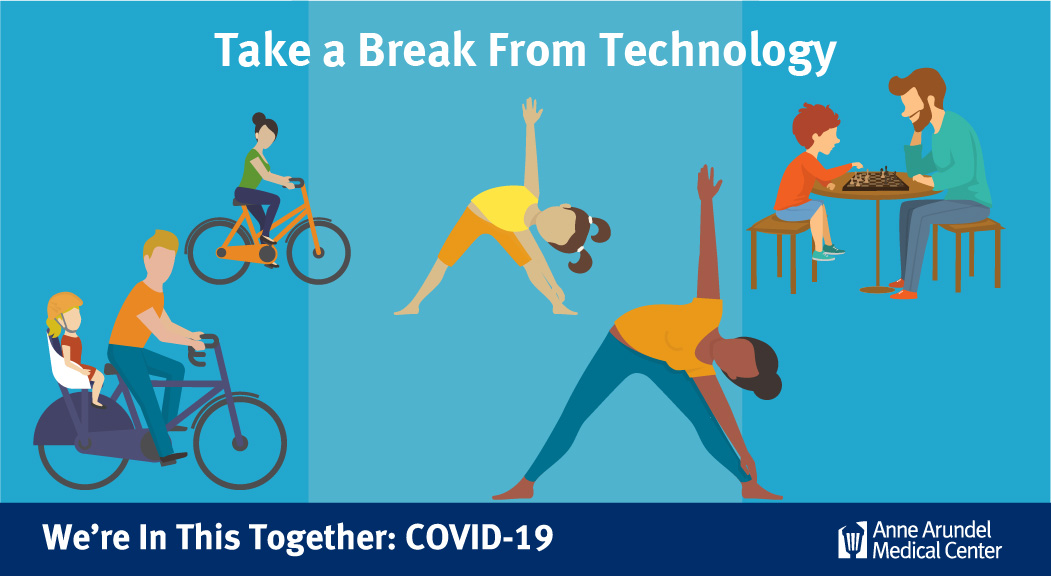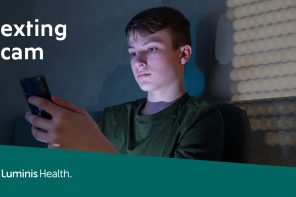In the last few weeks, we have all been learning how to live online while being asked to remain at home. Whether it’s grocery shopping, working or browsing the internet, doing so much from home has taught us how to transition into a more virtual world.
Similarly, children have felt the frustrations of social restrictions and the challenges that come with adapting to online learning. And whereas before they could go to school or to the playground before, now they are home.
It’s easy to scroll through your phone or sit in front of the TV and binge watch new and old shows. And it’s ok to do that once in a while. At the end of the day, we’re all learning a new way of life and how to navigate through a pandemic.
But it’s also important to remember that smartphone addiction is a real thing and that balance is important, especially for mental health.
Our phones are a big part of our lives. Sometimes, it even feels like they’re an extension of our hand — placing us at the mercy of whomever calls, texts or tags us next. Those posts and messages, despite our best attempts, alter our mood and decisions.
Our kids are just as digitally connected, and are displaying a similar, sometimes more extreme, shift in behavior as a result. Studies also show links between social media and depression and anxiety.
So how can you help combat this? Encourage your kids to put their phone or tablet down and reroute their focus to the present moment. Although there are social restrictions that limit us from going outside, there are plenty of things you can do with your children to help them disconnect from technology:
- Carve tech-free time into the family schedule. Make electronic devices off limits at specific times. Dinnertime and before bedtime are a good start, but additional breaks from technology each day is also ideal. You can also limit digital distractions by creating tech-free rooms in the house, such as the kitchen or living room. Designate a drawer, a shoebox or a shelf as the place where everyone puts their phones away for tech-free time.
- Set your goals. Are you trying to have more family time? Talk about your children’s worries or fears? Decrease the amount of time you’re on your screens? Whatever you’re trying to achieve, make it clear so everyone can participate and work toward the goal collaboratively and intentionally.
- Use tools for mindfulness. You can create cards with questions that will make your child think and initiate a conversation. For example, ask them about a time they had to handle a difficult situation and how they successfully overcame it. Your child can’t be present if they’re sitting on the other side of the table on their phone. When you’re talking, you’re learning about the other person and, even more importantly, gaining their trust. Trust is essential to a good relationship.
- Make things fun. Think of fun activities that can replace the time your kids spend on their phone and computer. You can suggest going out for a walk together around the neighborhood. You can also ask them to share their ideas of what you can do together as a family.
- Think about non-verbal messages. Non-verbal signals, like using eye contact, facial expressions, gestures and body language will help your child recognize emotions and understand the intent of a message. These non-verbal cues are lost when someone’s face is turned down to a screen.
It’s a new way of life. We’re all individually learning how to best navigate this time of uncertainty and what works best for us. If you need to scroll through social media and laugh at memes or watch your favorite show, do what feels right to you. Just be mindful to take care of your mental health and the mental health of your youngest family members.
What kids are going to remember is how they felt during this time. Carve tech-free time to talk and go over their worries and feelings. Try to make it a positive and rewarding experience for kids as much as possible – it will in turn be a more positive experience for you, too.
 Daniel Watkins is the nursing manager at Pathways, Anne Arundel Medical Center’s substance abuse and mental health treatment facility. You can reach him at 410-573-5434.
Daniel Watkins is the nursing manager at Pathways, Anne Arundel Medical Center’s substance abuse and mental health treatment facility. You can reach him at 410-573-5434.




